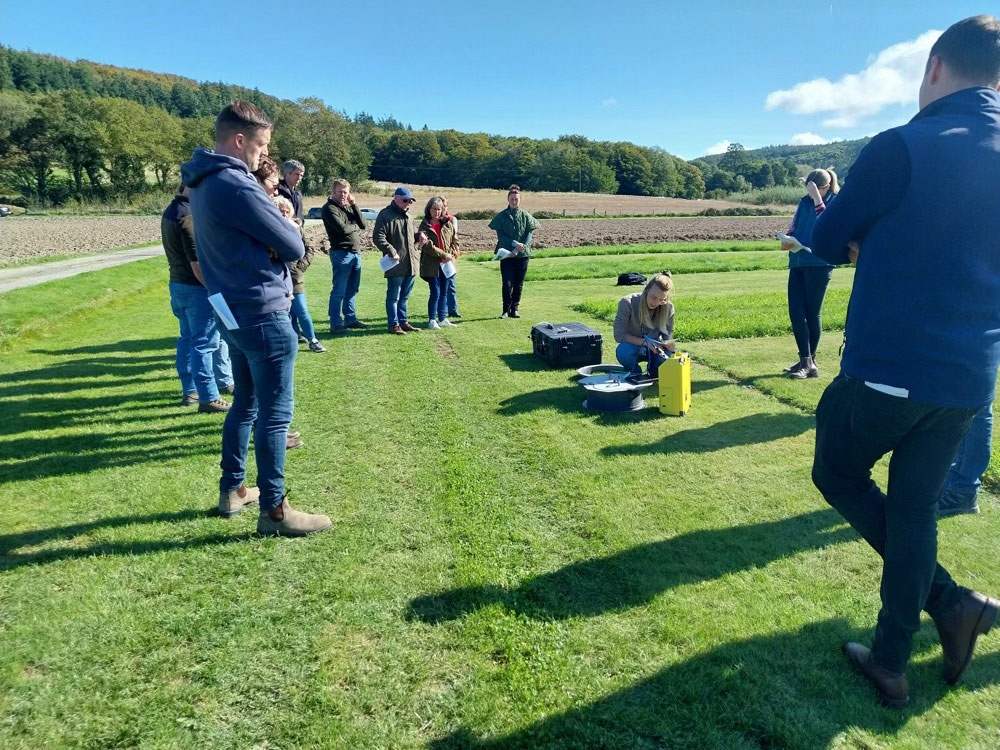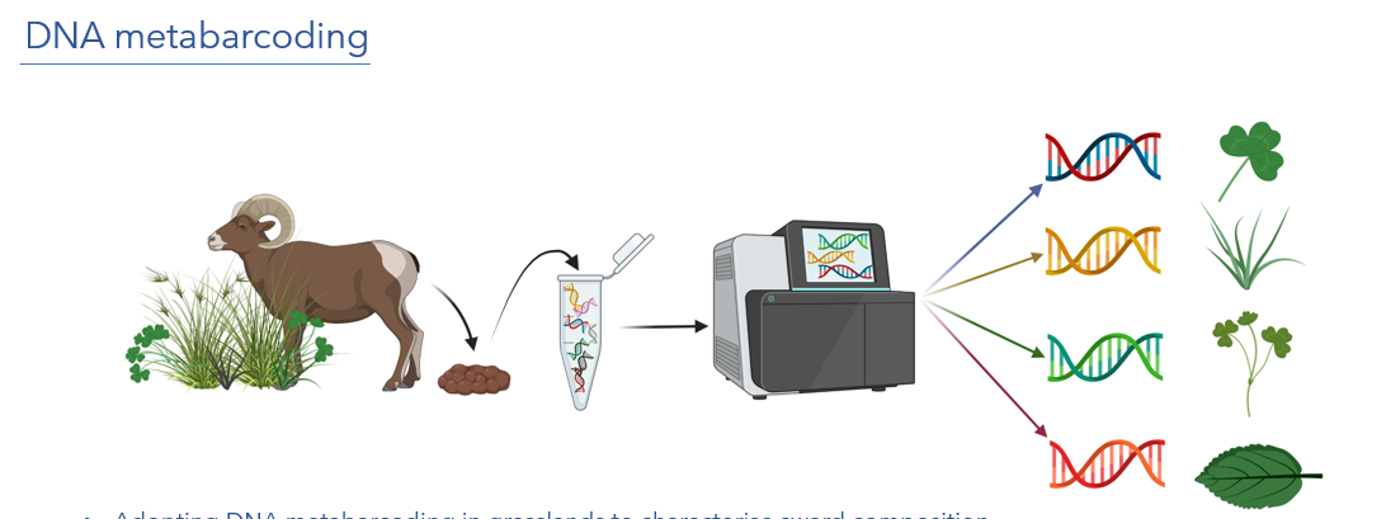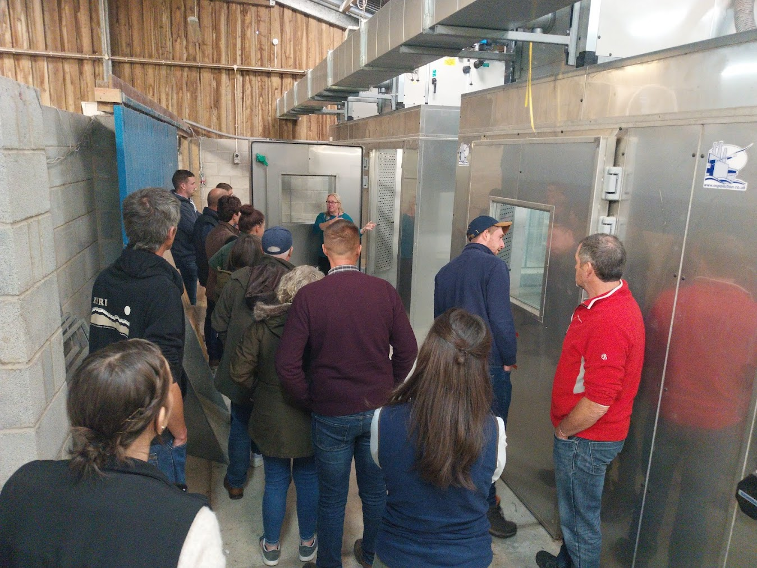Innovations in agricultural resilience, sustainability, and climate-smart technologies - Event Report

Field Tour
IBERS Event Summary – 24 September 2025
The Institute of Biological, Environmental and Rural Sciences (IBERS) at Aberystwyth University hosted a knowledge exchange event on 24 September 2025 for the Dunbia – Asda Lamb Group to explore innovations in agricultural resilience, sustainability, and climate-smart technologies.
Event Overview
Mark Needham, agriculture engagement manager at IBERS, opened the event with an introduction to the resources, structure and research programmes which come under the Resilient Crops Programme, setting the tone for a day of practical innovation and collaborative research.
Speaker Highlights and Research Topics
Local farmer and PhD Student at IBERS, Dave Evershed, discussed the challenges of spring water supply on his farm and its impact on grazing.
With support from Farming Connect and local LoRaWAN specialists, he has developed and installed a LoRaWAN monitoring system to track water usage and availability.
This affordable, farm-specific solution has enabled better grazing management and improved sustainability. Dave noted that Wales (along with Germany) has the highest coverage of this free, low-power technology in Europe, thanks to Welsh Government support.

Dr Hannah Vallin spoke about DNA metabarcoding technology, which identifies the individual genetic code found in all living organism, such as the plants that sheep eat.
By analysing livestock dung, she has been able to identify diet composition. This method reveals which plant species are being consumed and preferred, offering insights into animal health, productivity, and reproductive performance.

Professor Alison Kingston-Smith, Director of Research at IBERS, and Dr Kenton Hart highlighted the value of IBERS’ work in quantifying livestock emissions under various treatments using respiration chambers to measure methane emissions from individual sheep.

Professor Kingston Smith pointed out that while these state-of-the-art facilities are not currently in use, they are a valuable resource for future research and can play a crucial role in understanding and mitigating the environmental impact of livestock farming.
Mapping Liver Fluke
Dr Rhys Jones, from the University’s Department of Life Sciences, explained how environmental DNA technology (eDNA) is being used to identify areas on farms where liver fluke may be present.
By sampling water in wetter areas of farm, the technology is able to detect the unique genetic code of the mud snail, a key part of the liver fluke lifecycle. Armed with this knowledge, farmers and animal specialists are able to plan more effective fluke control strategies. This approach will help to maintain livestock productivity, reduce reliance on chemical treatments, and slow the development of anthelmintic resistance.
Matthew Rollason, Agriculture Manager at Dunbia emphasized the importance of this research, noting that liver fluke damage and subsequent offal rejection at abattoirs represent a significant cost to the entire lamb supply chain. Improved detection and control could reduce infections, improve animal performance and add value to the offal which otherwise has to be disposed of at a cost.
Experimental Field Plots
The delegation were also given a tour of some of IBERS’ experimental field plots at Gogerddan, where Dr Mari Davies presented the Land Use Net Zero (LUNZ) project. which investigates the impact of different pasture compositions on animal productivity, greenhouse gas (GHG) emissions, nitrogen excretions, and soil health. Dr Davies demonstrated the monitoring kit used in the project, helping the group to visualise the work required to quantify emissions from pasture-based systems in the UK and identify areas for improvement.

David Lloyd, Head of Plant Breeding for Germinal Horizon at Gogerddan, concluded the plots tour with an engaging discussion on the processes and timescales involved in breeding new forage varieties. He spoke in detail about exciting breakthroughs in clover breeding, aiming to develop plants that combine nitrogen-fixing and methane-inhibiting characteristics. This innovation could reduce the need for purchased nitrogen and improve energy efficiency in livestock production.
Mr Lloyd also discussed the Nitrogen Utilisation Efficiency (NUE) in legumes, which seeks to optimize the rhizobia relationship for better nitrogen fixation, thereby reducing reliance on artificial nitrogen fertilizer - a major cost and contributor to GHG emissions.
We are incredibly grateful for the warm welcome and excellent organisation today. The discussions were insightful, the schedule ran like clockwork, and even the weather played its part. The feedback from attendees has been overwhelmingly positive,” said Matthew Rollason, Agriculture Manager.



